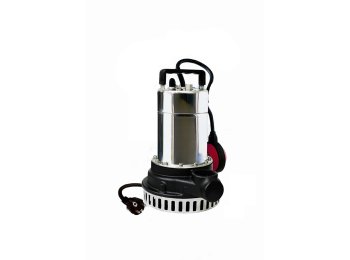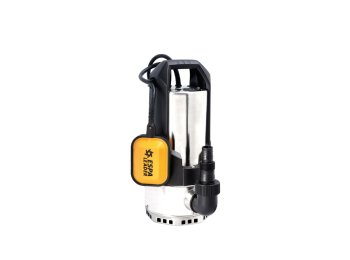Drainage pumps: the ally against heavy autumn rains
During the wettest time of the year, it happens that you have to deal with flooding in garages, basements or elevator pits. How to be prepared ?
- Equipping yourself with a drainage pump is a great way to avoid flood damage
- In case of dirty water or water with suspended solids, a suitable type of submersible pump should be evaluated
- When purchasing a drainage pump, you should evaluate its application to choose the most functional material and the correct size

The arrival of autumn, the wettest season of the year, also means preparing for the consequences of heavy rainfall, which is unfortunately becoming more and more frequent with the climatic transformations we are witnessing. Equipping yourself is the best thing to do to not get caught unprepared. Particularly at risk are rooms in homes that are at or below ground level, such as garages, basements or taverns. However, to cope with the problem of flooding during heavy rains, we can count on a strategic ally: the drainage pump.
How to choose the right drainage pump
Drainage pumps are the ideal tool for emptying a flooded room in a short time and preventing water damage. They work even when only partially submerged in water, and it is enough to place them on the attached floor to drain it quickly. If the room has slopes, it is of course advisable to place the drainage pump at the lowest point. This will make emptying easier and the pump can drain even small amounts of water without overheating. An additional consideration is the type of liquid to be treated, so as to prevent the pump from clogging or breaking down. In fact, some drainage pumps are designed to suck clean water. Draining clear water, such as may be rainwater, does not require special construction features. In the case of draining dirty water, muddy water with suspended solids, it is ideal to use pumps equipped with larger passage sections with vortex backward impellers.
Electric submersible drainage pumps are available in various types of materials. There are drainage pumps with pump body and hydraulic components made of plastic, technopolymer, cast iron, brass, stainless steel... Inducing the choice is the use to which the pump is put and the requirements for corrosion resistance. As is well known, stainless steel offers particular guarantees of durability even in harsh environments. Regarding pump sizing, the parameters to be considered are:
- THE FLOW RATE, that is the amount of water the pump can move in a certain time interval. This measurement allows us to figure out any emptying times in the room;
- THE HEAD, which is the amount of water the pump can push at a given height. This is particularly interesting when water has to be pushed to a significant height to be expelled.
Some tips for fixing the room after flooding...
After the excess water has been removed, it is a matter of cleaning up to limit the damage and proceeding with the drying steps. To act safely, it is a good idea to equip yourself with non-slip boots, gloves and masks.
Bleach is undoubtedly a good aid to fight germs and bacteria on floors and counteract mold growth. Water and bleach are also good for cleaning the walls. If there is furniture in the flooded room, this should be cleaned with warm water and a mild detergent.
Also crucial is drying. In addition to opening windows, using a dehumidifier can speed up operations and help limit damage.























